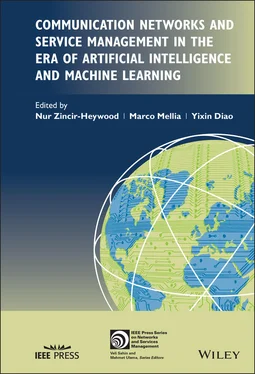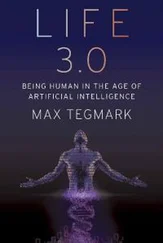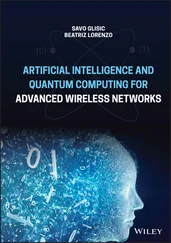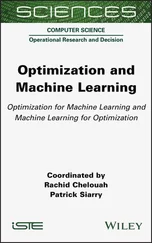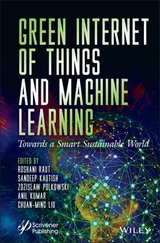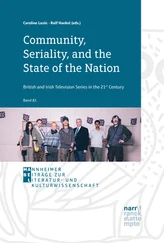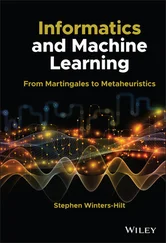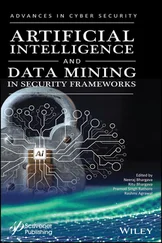18 18 Syu, Y., Wang, C., and Fanjiang, Y. (2019). Modeling and forecasting of time‐aware dynamic QoS attributes for cloud services. IEEE Transactions on Network and Service Management 16 (1): 56–71.
19 19 Dalmazo, B.L., Vilela, J.P., and Curado, M. (2017). Performance analysis of network traffic predictors in the cloud. Journal of Network and Systems Management 25 (2): 290–320. https://doi.org/10.1007/s10922‐016‐9392‐x.
20 20 Hardegen, C., Pfülb, B., Rieger, S., and Gepperth, A. (2020). Predicting network flow characteristics using deep learning and real‐world network traffic. IEEE Transactions on Network and Service Management 17 (4): 2662–2676.
21 21 Chen, Z., Wen, J., and Geng, Y. (2016). Predicting future traffic using Hidden Markov models. 2016 IEEE 24th International Conference on Network Protocols (ICNP), IEEE, pp. 1–6.
22 22 Zhang, Y. and Zhou, Y. (2018). Distributed coordination control of traffic network flow using adaptive genetic algorithm based on cloud computing. Journal of Network and Computer Applications 119: 110–120.
23 23 Diao, Y. and Shwartz, L. (2015). Modeling service variability in complex service delivery operations. In: 11th International Conference on Network and Service Management, CNSM 2015, Barcelona, Spain (9–13 November 2015) (ed. M. Tortonesi, J. Schonwalder, E.R.M. Madeira et al.), 265–269. IEEE Computer Society. https://doi.org/10.1109/CNSM.2015.7367369.
24 24 Diao, Y. and Rosu, D. (2018). Improving response accuracy for classification‐ based conversational IT services. 2018 IEEE/IFIP Network Operations and Management Symposium, NOMS 2018. Taipei, Taiwan: IEEE (23–27 April 2018), pp. 1–15. https://doi.org/10.1109/NOMS.2018.8406138.
25 25 Morichetta, A. and Mellia, M. (2019). Clustering and evolutionary approach for longitudinal web traffic analysis. Performance Evaluation 135. https://doi.org/10.1016/j.peva.2019.102033.
26 26 Khatouni, A.S., Seddigh, N., Nandy, B., and Zincir‐Heywood, N. (2021). Machine learning based classification accuracy of encrypted service channels: analysis of various factors. Journal of Network and Systems Management 29 (1): 1–27.
27 27 Kim, H., Lee, D., Jeong, S. et al. (2019). Machine learning‐based method for prediction of virtual network function resource demands. 2019 IEEE Conference on Network Softwarization (NetSoft), IEEE, pp. 405–413.
28 28 Moradi, F., Stadler, R., and Johnsson, A. (2019). Performance prediction in dynamic clouds using transfer learning. 2019 IFIP/IEEE Symposium on Integrated Network and Service Management (IM), IEEE, pp. 242–250.
29 29 Elsayed, M., Erol‐Kantarci, M., Kantarci, B. et al. (2020). Low‐latency communications for community resilience microgrids: a reinforcement learning approach. IEEE Transactions on Smart Grid 11 (2): 1091–1099. https://doi.org/10.1109/TSG.2019.2931753.
30 30 Khanchi, S., Vahdat, A., Heywood, M., and Zincir‐Heywood, N. (2018). On botnet detection with genetic programming under streaming data label budgets and class imbalance. Swarm and Evolutionary Computation 39: 123–140.
31 31 I. Nevat, D.M. Divakaran, S. G. Nagarajan et al. (2018). Anomaly detection and attribution in networks with temporally correlated traffic. IEEE/ACM Transactions on Networking 26 (1): 131–144.
32 32 Kim, D., Woo, J., and Kim, H.K. (2016). “i know what you did before”: general framework for correlation analysis of cyber threat incidents. MILCOM 2016 – 2016 IEEE Military Communications Conference, pp. 782–787. https://doi.org/10.1109/MILCOM.2016.7795424.
33 33 Meng, M. (2008). Network security data mining based on wavelet decomposition. 2008 7th World Congress on Intelligent Control and Automation, pp. 6646–6649. https://doi.org/10.1109/WCICA.2008.4593932.
34 34 Tartakovsky, A.G., Rozovskii, B.L., Blazek, R.B., and Kim, H. (2006). A novel approach to detection of intrusions in computer networks via adaptive sequential and batch‐sequential change‐point detection methods. IEEE Transactions on Signal Processing 54 (9): 3372–3382. https://doi.org/10.1109/TSP.2006.879308.
35 35 Bantouna, A., Poulios, G., Tsagkaris, K., and Demestichas, P. (2014). Network load predictions based on big data and the utilization of self‐organizing maps. Journal of Network and Systems Management 22 (2): 150–173. https://doi.org/10.1007/s10922‐013‐9285‐1.
36 36 Bacquet, C., Zincir‐Heywood, N., and Heywood, M. (2011). Genetic optimization and hierarchical clustering applied to encrypted traffic identification. 2011 IEEE Symposium on Computational Intelligence in Cyber Security (CICS), April 2011, pp. 194–201. https://doi.org/10.1109/CICYBS.2011.5949391.
37 37 Le, D.C., Zincir‐Heywood, N., and Heywood, M. (2016). Data analytics on network traffic flows for botnet behaviour detection. IEEE Symposium Series on Computational Intelligence (SSCI '16), December 2016, pp. 1–7. ISBN 9781509042401. https://doi.org/10.1109/SSCI.2016.7850078.
38 38 Finamore, A., Mellia, M., Meo, M., and Rossi, D. (2010). KISS: stochastic packet inspection classifier for UDP traffic. IEEE/ACM Transactions on Networking 18 (5): 1505–1515. https://doi.org/10.1109/TNET.2010.2044046.
39 39 Kayacik, G., Zincir‐Heywood, N., and Heywood, M. (2011). Can a good offense be a good defense? Vulnerability testing of anomaly detectors through an artificial arms race. Applied Soft Computing 11 (7): 4366–4383. https://doi.org/10.1016/j.asoc.2010.09.005.
40 40 Haddadi, F. and Zincir‐Heywood, N. (2016). Benchmarking the effect of flow exporters and protocol filters on botnet traffic classification. IEEE Systems Journal 10 (4): 1390–1401. https://doi.org/10.1109/JSYST.2014.2364743.
41 41 Bronfman‐Nadas, R., Zincir‐Heywood, N., and Jacobs, J.T. (2018). An artificial arms race: could it improve mobile malware detectors? Network Traffic Measurement and Analysis Conference, TMA 2018, Vienna, Austria: IEEE (26–29 June 2018), pp. 1–8. https://doi.org/10.23919/TMA.2018.8506545.
42 42 Lotfollahi, M., Siavoshani, M.J., Zade, R.S.H., and Saberian, M. (2019). Deep packet: a novel approach for encrypted traffic classification using deep learning. Soft Computing. https://doi.org/10.1007/s00500‐019‐04030‐2.
43 43 Wilkins, Z. and Zincir‐Heywood, N. (2020). COUGAR: clustering of unknown malware using genetic algorithm routines. In: GECCO '20: Genetic and Evolutionary Computation Conference, Cancún Mexico (July 8‐12, 2020) (ed. C.A.C. Coello), 1195–1203. ACM. https://doi.org/10.1145/3377930.3390151.
44 44 Ahmed, S., Lee, Y., Hyun, S., and Koo, I. (2019). Unsupervised machine learning‐based detection of covert data integrity assault in smart grid networks utilizing isolation forest. IEEE Transactions on Information Forensics and Security 14 (10): 2765–2777. https://doi.org/10.1109/TIFS.2019.2902822.
45 45 Le, D.C. and Zincir‐Heywood, N. (2020). Exploring anomalous behaviour detection and classification for insider threat identification. International Journal of Network Management. https://doi.org/e2109.
46 46 Dietz, C., Dreo, G., Sperotto, A., and Pras, A. (2020). Towards adversarial resilience in proactive detection of botnet domain names by using MTD. NOMS 2020 ‐ 2020 IEEE/IFIP Network Operations and Management Symposium, pp. 1–5. https://doi.org/10.1109/NOMS47738.2020.9110332.
47 47 Le, D.C., Zincir‐Heywood, N., and Heywood, M. (2020). Analyzing data granularity levels for insider threat detection using machine learning. IEEE Transactions on Network and Service Management 17 (1): 30–44.
48 48 Bag, T., Garg, S., Rojas, D.F.P., and Mitschele‐Thiel, A. (2020). Machine learning‐based recommender systems to achieve self‐coordination between son functions. IEEE Transactions on Network and Service Management 17 (4): 2131–2144. https://doi.org/10.1109/TNSM.2020.3024895.
Читать дальше
